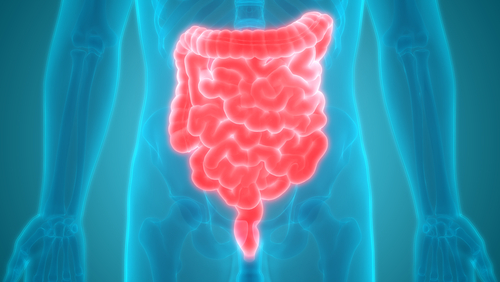Gut-Brain Connection Issues are Critical to Understanding Parkinson’s, Review Contends

Upon breaking down two decades of research about how the gut affects the brain in Parkinson’s disease, a vision for studying the gut-brain connection for the next two decades has been laid out in a review article published in the Journal of Parkinson’s Disease.
Specifically, the article, “The Gut and Parkinson’s Disease: Hype or Hope?,” focuses on developing the areas of research for alpha-synuclein pathology, biomarkers, and the gut microbiota and how it relates to the gut-brain connection in the context of Parkinson’s disease.
In addition to its presence in the brain, the first descriptions of alpha-synuclein disease-associated changes in the enteric nervous system (ENS) —the nerve system controlling the gut — dates back as far as the 1960s, and has been confirmed through decades of research.
Some studies in humans and mice have shown that alpha-synuclein can spread from the gut to the ENS. However, whether atypical alpha-synuclein is transmitted from the gut all the way to the brain and cause or influence Parkinson’s disease is still widely debated.
Want to learn more about the latest research in Parkinson’s Disease? Ask your questions in our research forum.
“Better understanding the role of the gut in Parkinson’s disease will help us to understand the origin of the disease and to improve treatments,” explained Filip Scheperjans, MD, PhD, in a press release. Scheperjans is with the department of neurology, at Helsinki University Hospital in Helsinki, Finland.
“There is accumulating evidence that at least in some Parkinson’s disease patients, the origin of the disease may lie in the gut with possible involvement of abnormal protein aggregates, local inflammation, and the gut microbiome. Therefore, further studies into the role of the gut in Parkinson’s disease are important and may reveal new possibilities for diagnosis and treatment,” Scheperjans said.
The authors outline the importance of using the next 20 years for understanding how alpha-synuclein and the gut-brain connection work together to cause or influence Parkinson’s disease. Specifically, they were interested in how Parkinson’s disease relates to prion diseases — rare neurodegenerative disorders of contagious misfolded proteins — because of their similarities in disease presentation.
For example, in variant Creutzfeldt-Jakob disease (CJD), there is little doubt about the occurrence of gut-to-brain propagation of prions — transmissible, disease-causing, misfolded proteins. The disease-linked prion aggregates form first in the ENS and peripheral lymphoid tissues, and then spread through the nervous system. Importantly, the prion aggregates in peripheral organs of variant CJD show clear differences when compared to prions in brain tissues.
These types of prion-related processes have not been fully elucidated in the context of Parkinson’s disease. To this end, the authors proposed four main gut-brain issues in Parkinson’s disease to be addressed in the upcoming decade:
- Comparing ENS and central nervous system alpha-synuclein aggregates: Comparing alpha-synuclein aggregates in the ENS to the ones found in the brain might be critical in understanding the role of the gut in Parkinson’s disease pathogenesis. If they are similar, this may suggest that alpha-synuclein transmission between the ENS and brain is linked in Parkinson’s disease.
- Linking gut permeability to Parkinson’s disease severity: Intestinal permeability — porosity — has been suggested to increase with Parkinson’s disease; however, this research is unclear. This is important to understand because a more porous intestine may be succeptible to initial alpha-synuclein aggregation in the ENS.
- Developing biomarkers: Alpha-synuclein protein has been shown to be detectable in the ENS of Parkinson’s patients. However, the biomarkers used to detect alpha-synuclein deposits in the ENS of Parkinson’s disease patients have provided conflicting results. Therefore, there is an urgent need to develop more techniques to detect alpha-synuclein aggregates in the gut, ENS, and central nervous system.
- Diagnosing and harnessing the gut microbiota: Changes in gut microbiota composition in Parkinson’s disease have been seen in populations all over the world. Understanding how gut microbiota and Parkinson’s disease are related needs to be studied in huge groups across multiple locations, as well as in animal models, to come up with population-specific approaches for diagnosis and harnessing the gut microbiota in Parkinson’s disease. There is a lot of potential in using the gut microbiota for diagnostic and therapeutic purposes in Parkinson’s disease.
“Our understanding and appreciation of the importance of the gut-brain connection in Parkinson’s disease has grown rapidly in recent years. We are confident that the coming two decades of microbiome-gut-brain-axis research will see an even accelerated development in this area that will reshape our understanding of the pathogenesis of Parkinson’s disease,” researchers concluded.
“The gut has emerged as one of the new frontiers in Parkinson’s disease research,” wrote Patrik Brundin, MD, PhD, and J. William Langston, MD, editors-in-chief of the Journal of Parkinson’s Disease. “We predict there will be several advances regarding the gut in the coming 20 years. Changes in the gut might be utilized to diagnose Parkinson’s disease earlier; new therapies targeting these changes might slow disease progression, reduce constipation, and improve gut function in patients who have already been diagnosed.”






